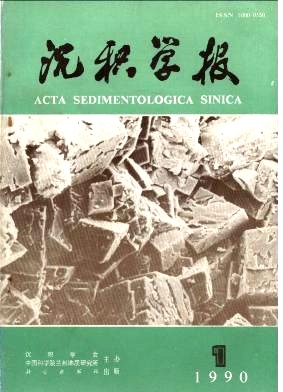THE DIAGENESIS AND SECONDARY PORES OF THE LOWER PERMIAN OF KEPING AREAS IN THE NORTHWESTERN EDGE OF THE TALIMU BASIN
- Received Date: 1988-12-27
- Publish Date: 1990-03-10
Abstract: The Permian of Talimu basin is one of the important layers to explore and develop oil and gas. Sard-stone is the most important reservoir rocks of oil and gas. By means of researching the feature of dia'gencsis of sandstone, we can probe into the evolutionary trend and distributive law of the pore Then, it may effectively guide us to explore and develop oil and gas. The Permian of Keping area in Xinjiang extensively shows the Lower Permian. The principal pan of the Lower Permian is a series of miscellaneous colour fragmentary rocks, and is a transitional sediment that contains intermittently marine layer. There was volcanic activity (basait). Before our researches, the sedimentary environment and facics of sandstone-this scries of miscc ia-neous colour fragmentary rocks of continental origin-had been researched by some people. Bui ihc diagenesis and secondary pores have not been done so far. We have been studying on sedimentary fanes and diagenesis and secondary pores of the layers by fieldwork, ' flakes of rock, colouration, grain-size, scanning electron microscope studies, cathodlumineccnce, X- ray diffraction analysis, etc. The phenomena of diagensis observed includes 1) dolomitization of aqualotysis; 2) cementation of early-calcite; 3) compaction and pressolution; 4) replacement; 5) formation of self-precipitation clay mineral; 6) corrosion of feldspar; 7) secondary and overgrowth quartz and feldspar, 8) filling of hydrocarborn; 9) dissolution indeep subground; 10) filling of dolomite and ferrodolomite; etc. The principle, feature, evolutionary order and its relation of diagenesis has been analysed and discussed in detail. Based on it we built a simple and ideal history of diagenesis. By the stueies of deagensis, we predict distributive law of undergroundporc and point out six ma ks to distinguish second arypores. The author divided roughly five types of secondary pores according to he contributing factors. It is concluded that 1), dissolution of calcareous cement; 2), dissolution and corrosion of replatement mineral; 3), dissolution of feldspar; 4), change of clay mineral; 5), fragmentation. The form, relative content and evolution of the secondary pores arc analysed and described. And it is shownwith the figures and tables. The author consider, on the basis of the sedimentation, that the diagenesis (The primary facto is the dissolution) is the most important affect in the formation of the secondary porein sand bodies. Ml that we do, to a certain extent, has guidable significance to explore and develop oi! and gas. In he meantime, we set forth our views that how to divide the sedimentary facies of the series of layer.
| Citation: | Chen Guojun, Ma Baolin. THE DIAGENESIS AND SECONDARY PORES OF THE LOWER PERMIAN OF KEPING AREAS IN THE NORTHWESTERN EDGE OF THE TALIMU BASIN[J]. Acta Sedimentologica Sinica, 1990, 8(1): 91-97. |






 DownLoad:
DownLoad: